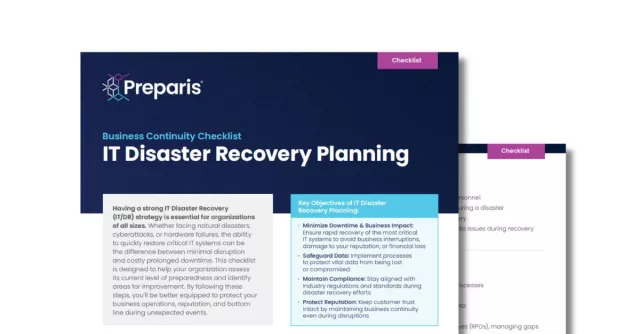The Crucial Role of Business Impact Analysis (BIA) in Cyber Resilience

Important to this structured approach is the Business Impact Analysis (BIA). A BIA is like a health checkup for your business. It helps you understand which parts of your business are most important and what could happen if they were affected by a disruption or cyberattack. The BIA is a critical process that uncovers vulnerabilities and identifies dependencies and gaps.
Cyber resilience is defined as “an entity’s ability to continuously deliver their products and services despite any adverse cyber events by actively preparing, planning, reacting, responding, and recovering the entity from cyberattacks” (source: DRII Glossary).
Cyber resilience not only includes technical safeguards such as cybersecurity measures but also involves organizational processes, people, and a culture that enables rapid and effective responses to cyberthreats.
The BIA serves as a foundation for identifying the criticality of assets and processes essential for business continuity. By conducting a comprehensive analysis, organizations can pinpoint key data, systems, and processes that are critical to their operations, enabling targeted resilience planning and resource allocation.
BIA and the NIST Cybersecurity Framework
The National Institute of Standards and Technology (NIST) Cybersecurity Framework provides a structured approach for organizations to enhance their resilience against cyber threats. It emphasizes the importance of preparing for, responding to, and recovering from incidents by leveraging principles such as risk management, resilience planning, and continuous improvement.
A BIA helps you figure out what parts of your business are essential for keeping things running smoothly. This could be important data, systems, or processes. By knowing what's most important, you can focus on protecting those areas first.
BIA and the Business Continuity Management Lifecycle
A Business Continuity Management Lifecycle model provides methodologies for organizations to ensure the uninterrupted delivery of critical services and processes. These methodologies include phases such as risk assessment, business impact analysis, continuity planning, and testing, enabling businesses to proactively mitigate risks and maintain operational resilience.
A thorough BIA allows organizations to assess the potential risks and dependencies associated with their critical assets, processes, and services. This includes evaluating the likelihood and impact of cyberthreats, as well as identifying interdependencies between various systems and processes. By understanding these risks, businesses can develop tailored mitigation strategies to strengthen their cyber defenses and minimize the impact of disruptions.
The Importance of the BIA Results
By using the consolidated data from your BIA, you can ensure that your business is as safe and secure as possible. This means you're less likely to be caught off guard by cyberthreats and will be better able to recover quickly if something does happen.
Prepared with the data the BIA provides, organizations can develop resilience strategies aligned with the principles outlined in the NIST framework and the Business Continuity Management Lifecycle. This may involve implementing redundancies, backup systems, and response plans tailored to address specific cyber threats and scenarios identified during the analysis. By proactively planning for various contingencies, businesses can enhance their ability to withstand and recover from incidents, maintaining business continuity and safeguarding their reputation.
The BIA serves as a foundation for continuous improvement, enabling organizations to adapt and evolve their resilience strategies in response to emerging threats and changing business needs. Incorporating the BIA with the NIST Cybersecurity Framework and the Business Continuity Management Lifecycle can assist organizations with demonstrating compliance, regulatory requirements, and industry standards. It provides evidence of an organization’s efforts to assess and mitigate cyber risks and in doing so reduce the likelihood of regulatory penalties and reputational damage.


